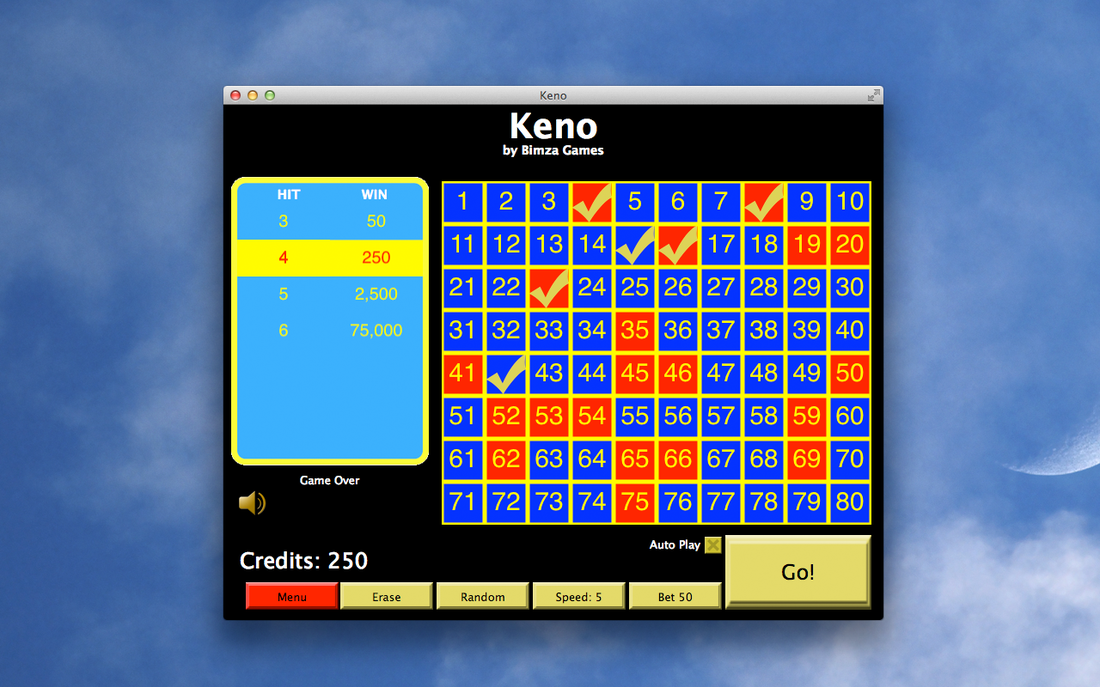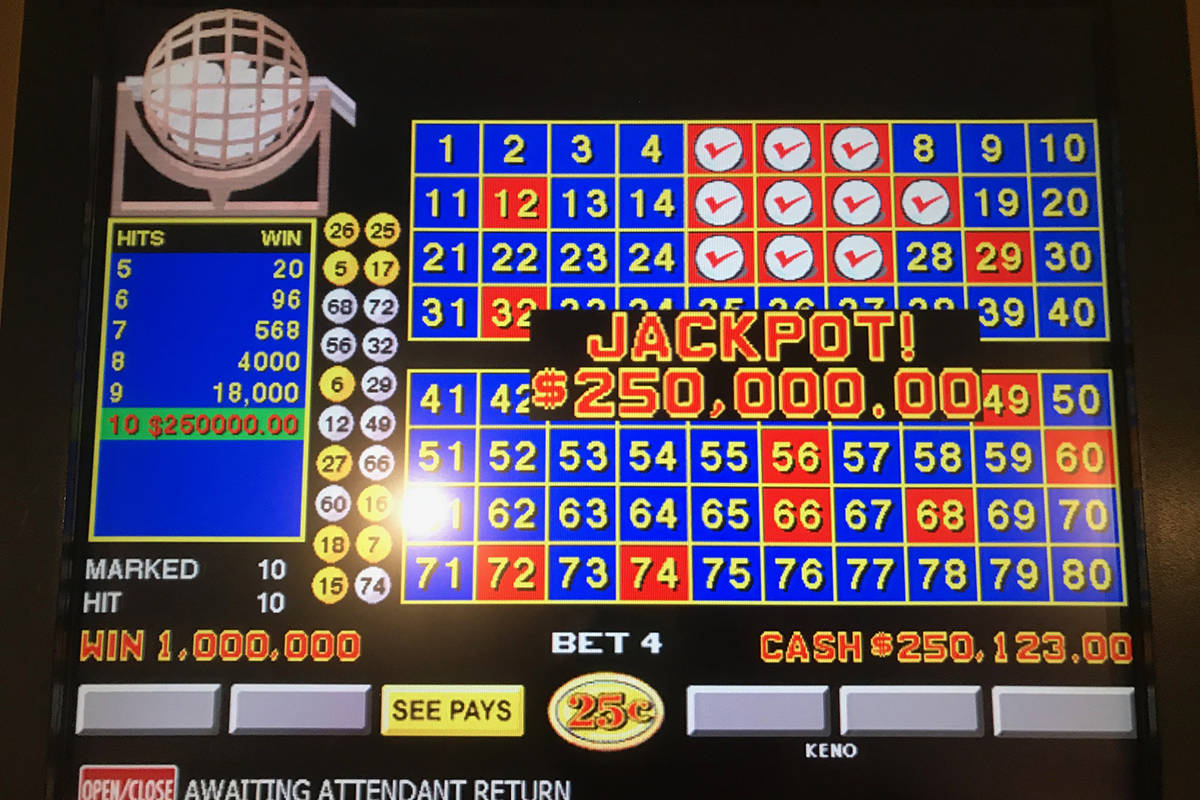A Lansing woman, however, won a $250,000 prize playing the same set of numbers on Michigan Lottery’s KENO! It seems she took a piece out of Richard Lustig’s advice and it paid off. Richard Lustig is a seven-time lottery grand prize winner who also is famous for telling players to pick their own numbers and stick with them every time they play. A Keno Drawing is underway. Play more games now while you wait. You didn’t play for this drawing. $250K video keno jackpot pays out at locals casino The winner, who chose to remain anonymous, was playing four coins on the 25-cent machine just before 7 a.m. When the numbers hit.
Tntea Hits Keno for $250,000.00; Tntea Hits Keno for $250,000.00. Last post 14 years ago by TGOOD7. Page 1 of 6: Print E-mail Link: MADDOG10.
The prize tables in keno can look a bit complicated. Here’s our quick tips on what to look out for in keno pay schedules.
Each casino has its own system of payouts, which you will find set out in the Keno brochures or payout schedules around the casino or, if you’re playing Video keno you’ll find a payout table on each machine. An example is shown below.
The term ‘spot’ refers to how many numbers you have marked on your ticket. The term ‘catch’ refers to how many of your chosen numbers match what the house draws.
The table shows what you will win for a 1 coin stake. You need to multiply these amounts by the amount you are wagering. So in the example below, if you make a $2 bet, pick 4 spots and catch 3 of them you will win $12 (that is, $2 x 6).
This schedule does not pay out if you don’t match any numbers. But in some cases if you mark a lot of numbers the casino pays off if you catch 0.
Note that in Keno you do not get your stake back if you win.
Another Example of a Keno Paytable
This is the payout schedule for online casinos running on Microgaming software. If you like the look of it, here’s where to find Microgaming casinos.
In a live casino keno game, where lots of players are gambling on the same draw, the most the house can pay out for any one draw is generally $50,000. If there are too many winners they will each get a proportionate share of this sum.
Keno can be very versatile in terms of pay table and house edge. Also, it depends largely on the maximum number of spots that players can choose and attempt to 'hit' or 'catch'. It is typically limited to 10, 12 or 15 numbers (spots), but it can also be 20 numbers right away. One thing is always the same, there are 20 winning numbers drawn out of the total 80. Let us put the most typical 10-Spot Keno variation under the microscope and follow some concrete calculations.
This web page is a follow-up to the general Keno rules. Of course you can find there some interesting calculations as well. This time we pick up the most typical Keno variation with 10 spots. Thus the top prize is paid out if a player manages to guess 10 numbers out of the 20 numbers drawn.
Having chosen a Ten Spot Keno game, we can now calculate all the true odds and probabilities that are valid for this type of game. We will also use some model or possible pay table, which is the last element to enable us calculate the house edge (based on this model pay table). As the pay tables vary from casino to casino, so does the house edge.
A Model Paytable
Let us start with the pay table. Table 1 shows the payout ratios (the multiples) for all combinations of spots and successful hits. If you e.g. tried to catch 10 numbers and succeeded to hit them all, you would receive $200,000 for a $1 ticket. If you were less successful and hit 'only' 9 of 10, the win would be $10,000 and so on. You can see that if you attempted to hit 10 to 6 numbers and hit no number, your bet would be returned.
The color key is simple. The payouts in green are winning, those in bright red are losing. The same logic is used for the remaining tables related to probability, odds and house edge as well.
Table 1 – A model 10-spot Keno pay table
Note: The model pay table was actually borrowed from the Czech lottery game Šťastných 10 (meaning 'Lucky 10' in English), which is virtually a ten spot Keno game that fits perfectly for our needs. The calculations of odds and probabilities below are 100% valid for any ten spot Keno game. The model pay table will also be used demonstrate the calculation of the house edge (see Table 4, but let us not skip over).
Ten Spot Keno Probabilities & Odds
The probabilities for all combinations of spots and hits are shown at the Table 2. It is a very valuable source of information. First of all, as always, the total of probabilities in a column must equal one (or 100% if you like). Then you can see, which outcomes are the most probable. For instance if you chose to catch 10 numbers, the most probable outcome would be hitting 2 numbers out of 10 (0.2953 or 29.53% to be exact).
You can also sum up the green values in a column to arrive at a winning (or actually 'not losing' probability, because if you manage to catch zero numbers your bet will only be returned), in case of the 10-spot ticket it is 0.1105 or 11.05%. Now you can sum up the red values or deduct the winning probability from 1 or 100% and you get the probability to lose 0.8895 or 88.95%.
Table 2 – Ten spot Keno probabilities
For an exhibit we can calculate the probability of the least probable outcome, that is to catch all 10 numbers out of 10 (please note that for space purposes there are only 7 digits displayed in the Table 2). We already know that probability can be defined as the number of positive possibilities (the nominator) divided the total number of possibilities (the denominator).
It is easier to determine all possibilities (combinations) – they are the same for all-spot Keno games. We may use the Excel function =COMBIN(80,20) and get the result of 3,535,316,142,212,180,000 combinations (the denominator). To calculate the number of all winning possibilities is a bit harder as we have to catch 10 numbers out of 10, but there are 20 winning numbers drawn out of 80. Thus, with the use of Excel, the nominator is the following: =COMBIN(10,10)*COMBIN(80-10,20-10) = 396,704,524,216.
Now we can put it together and calculate the probability to get the top prize in ten spot Keno. That is so close to zero that it is almost impossible:
396,704,524,216 ÷ 3,535,316,142,212,180,000 = 0.000000112211895134156 or 0.0000112211895134156%.
You may think that the standalone probabilities in the Table 2 are not enough to decide whether they are that good or that bad. And you would be right. They need to be matched with the payouts. That is the only fair way to assess it and that is actually how the house edge is being calculated. But let us not jump forward.
First we can have a look at Table 3, the odds. They are just another and perhaps better-arranged presentation of the probabilities (the relation is: Odds = One divided Probability).

Table 3 – Ten spot Keno odds or the probability in the format '1 in ...'


10-Spot Keno House Edge
Keno 250 000
The calculation of house edge in ten spot Keno is simpler as it seems. We will determine it based on the concept of expected value. We will take the net payouts from the Table 4 and the probabilities from the Table 2. The procedure to arrive at the expected outcome is as follows: the net payouts are simply multiplied (weighted) by the probabilities and added up.
Table 4 – Ten spot Keno net payouts (considering the $1 invested in the game)
Keno 250000
--N043-00_W122-00--N042-00_W120-00.png)
Let us take e.g. a ten spot column as an example and suppose we bet a dollar. We may win $199,999 netto with the probability 0.000000112211895134156, so the partial expected outcome is 199,999 × 0.000000112211895134156 = approx. 0.0224 (see the coordinates 10×10 in the Table 5). Now we slide a row down, that is to hitting 9 out of 10 and the net win $9,999 with the probability 0.0000061 and the next partial expected outcome is approx. 0.0612 (due to rounding) and so on. Then we add up all partial results and get the value –0.5016 or –50.16%. That is quite high compared to Craps for instance (<2%).
Table 5 – Ten spot Keno house edge
Keno 250000 Lotto
The expected outcome for a player is negative. It is no surprise as it is the essence of all gambling and lottery games. House gets what a player loses—that is where the house edge comes from. Thus if you played 10 spot Keno with this pay table (Table 1), then, in the long run, you would likely lose about 50 cents per each dollar wagered in the game.
It is needed to highlight, however, that the expected value is related to the long-term period and that it does not mean that you could not be lucky enough to win the top prize with your first Keno ticket. It is just a lottery. You mostly lose, but if you win it is usually worth it.
→ Lottery Games
→ EuroJackpot
→ EuroMillions
→ Keno
→ Mega Millions
→ 10-spot Keno
→ Powerball
→ Scratch Cards